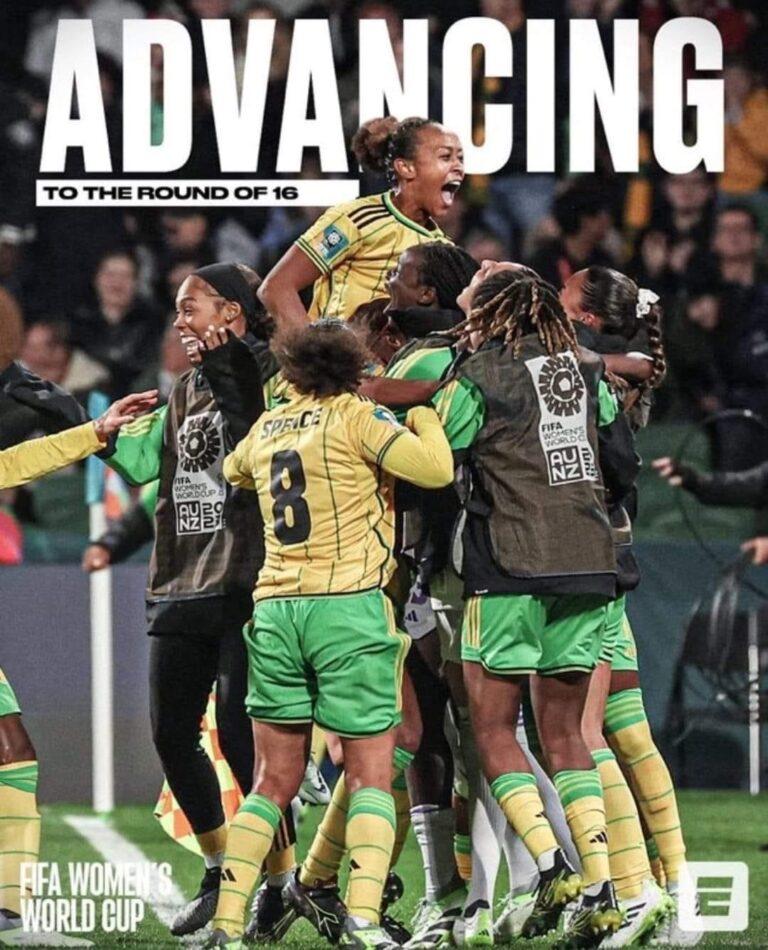The Art of Reggae exhibition at the National Gallery



Part 2
In the first part of this review, we looked at the history and objectives of the now biennial International Reggae Poster Contest and the current Art of Reggae Exhibition at the National Gallery of Jamaica (NGJ). We also explored the critical concerns that surround the lack of Jamaican participation in the contest over the years and the shallow, routinized manner in which Jamaican culture is represented in many of the posters. In this second and final part, we take a closer look at the posters in the current exhibition and the February 19 opening function.
The contest website tells us that the 2022 contest sought to honour “women in and of reggae and all other genres of Jamaican popular music” and highlight “the many roles of women in the Jamaican music industry” which have been “central to … Jamaica’s greatest cultural export.” The organizers also invited submissions that honoured “the women whose powerful roles in society as freedom fighter, cultural activist and nurturer are documented in Jamaican music.” It was the first time, I believe, that such a theme was introduced to the contest and that may have been a good thing.
While the concerns I expressed in the first part of this column remain valid, this year’s crop of winning posters seems more imaginative than what I had seen before. Perhaps the theme did not lend itself so readily to the routinized interpretations of reggae culture that were so overwhelmingly evident previously and also invited more active engagement and research on the part of the designers. There are however several posters that are graphically interesting but have nothing whatsoever to do with Jamaican music, history or culture, and just reflect generally on women and music, such as the two posters by Jan Li from China, which simply combine musical symbols with high heels.
What interests me about the contest and exhibition is what these posters are telling us, about the current status of Jamaican music in the global arena, and about how Jamaica and Jamaican history and culture are perceived and represented in different parts of the world. The exhibition and contest, however, fail to deliver on that count, as the focus is on celebration, and on highlighting the remarkable global participation statistics, but not on any such critical analysis. The exhibition and the contest website do not provide us with any information on the designers, beyond their names, the title of the poster, and their countries of origin. In many instances, when this is not evident from the name, we do not even know the gender of the designer, although this is of some importance here, given the gender-based theme. The manner in which the exhibition is installed, with posters stacked closely together is also not helpful, as it makes it harder to disaggregate the commonalities and directions in the individual posters.
One remarkable feature of the current edition of the contest is that there were 295 entries from China, the most for any country, and that 63 of the 100 winning posters are by Chinese designers, up from 21 in the 2017-18 edition (which was shown at the NGJ in 2019) and 29 in the 2020 edition. This is a significant increase, with Chinese entries now make up the majority of the winning posters, and this surely warrants further analysis. The posters are judged anonymously, we are told, by a diverse panel of judges, and based on their consistency with the exhibition theme and their design quality. The nationality of the designers would, therefore, not have been considered in the selection.
I know nothing about graphic design and illustration in China, or about the impact of reggae and Jamaican culture there, although the political climate and internet policies in China may put some restraints on that. Apparently, China has a well-developed poster culture, and art schools there actively encourage their students to enter the contest. While some of the Chinese designs are derivative, this can be said of many other posters in the contest, and several of the Chinese entries are, in fact, among the most imaginative and well-designed in the present selection. From what I could see, however, there was nothing that particularly distinguished the Chinese contributions from the other winning entries. I could not help but think of China’s notorious “art factories,” that mass-produce credible, competently executed replicas and pastiches of art from all over the world. If that is a factor in the growing Chinese participation in the International Reggae Poster Contest, which I hope it is not, this would only add to the routinization and cultural disconnection of the imagery.
There was a brief opportunity, in the (poorly attended) panel discussion on 21 February to discuss and contextualize the winning poster, Queen of the Maroons, by the Greek illustrator Vasilis Grivas. The poster provides a visually eclectic portrait of Grace Jones as Queen Nanny, which is certainly a tantalizing identification. While the Nanny figure has a commanding monumental quality, the smaller figures in her arms are scrawny, drawn in a linear, chalky graffiti style and, as a member of the audience observed, almost skeletal. According to the artist, this invokes Nanny as a symbolic mother, but it also seems to allude, more broadly, to her role as a protector of the oppressed. I left wanting to learn more about this and other posters and artists in the exhibition and I hope that there will be other programming that allows for the many critical implications of this project to be unpacked.
In closing, the handling of the exhibition opening also warrants some commentary. I arrived right after the speeches, and deliberately so, as I now have the luxury of avoiding the tedious officialdom of such programmes, but I received many reports on what was said and done. The Minister of Culture, Gender, Entertainment and Sport Olivia “Babsy” Grange was billed as the keynote speaker but was in actuality represented by the Ministry’s permanent secretary, Denzil Thorpe, who read her (no doubt aide-written) speech. We have to ask why Minister Grange has to be the keynote speaker at practically every National Gallery function, as this points towards an excessive political ownership of the institution.
When I arrived the speaker’s podium was flanked by two poster portraits of Minister Grange, displayed on easels. Apparently, they had been unveiled after the reading of the Minister’s speech, as gifts from the contest organizer Maria Papaefstathiou and the 2022 contest winner Vasilis Grivas. Minister Grange’s professional role in the music industry certainly deserves to be acknowledged, but that this was a major feature of the function troublingly illustrates how steeped our cultural institutions now are in a culture of political patronage and clientelism.
The speech included assurances, I was told, that the Ministry is committed to the establishment of the Reggae Hall of Fame and a national performance centre. This too raises many questions, given the lack of progress with the establishment of a Jamaica Music Museum that improves on its current, very modest operations and premises at the Institute of Jamaica, despite many similar announcements over the years. It also raises the question whether the Ministry supports the Reggae Hall of Fame or Jamaica Music Museum model, as the two are quite different, conceptually. Let us see whether this latest political promise will yield any tangible, and whether productive common ground will be found between the Jamaica Music Museum and Reggae Hall of Fame plans in a way that does justice to the significance and impact of Jamaica’s music history.
Dr Veerle Poupeye is an art historian specialized in art from the Caribbean. She works as an independent curator, writer, researcher, and cultural consultant. The second, revised and expanded edition of her best-known book “Caribbean Art” was recently published in the World of Art series of Thames and Hudson. Her personal blog can be found at veerlepoupeye.com.






